What a tiring day! You are heavily stressed from work and responsibilities at home, so you took a cup of your favorite tea to relax. While enjoying a cup, an idea crossed your mind, “Can I grow my own tea from the tea bags”? We've pored over this caffeinated conundrum to bring you answers!
Unfortunately, it is impossible to grow tea from tea bags. Tea leaves from store-bought tea bags have already undergone processes, dried and oxidized. The only way to grow tea is by planting seeds, growing a seedling, or by rooting a cutting.
Though it breaks our hearts, there is a brighter side to this story. You can still make use of your tea bags after finishing a cup of tea! Read on and we will help you maximize your resources and can even help you have a tea garden if you like.

What Can I Do With My Tea Bags?
One of the common mistakes is throwing the used tea bags in the trash. This does not only add up to the global garbage problem, but it is also such a waste that you aren’t harnessing the potential of your tea bags. Tea leaves contain tannic acid and natural fertilizers which is perfect if you are planning on growing some plants. These will add nourishment to the seedling as it grows.
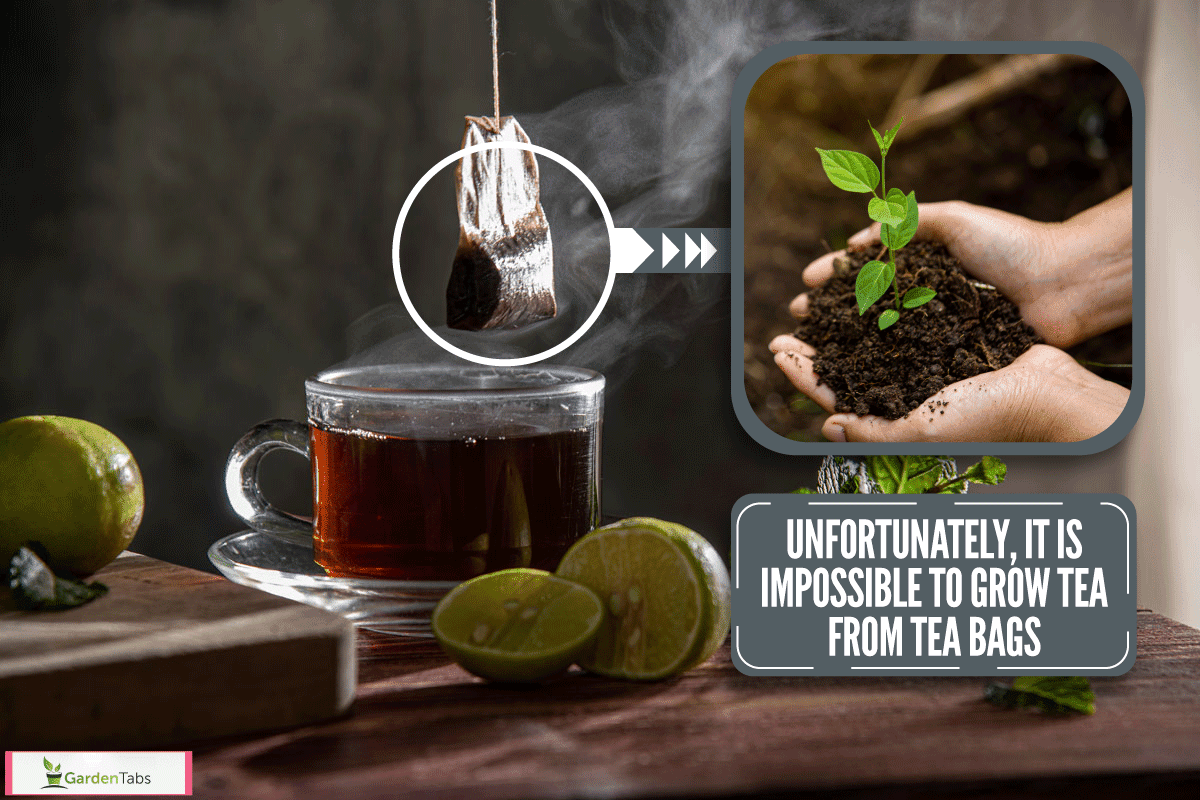
Growing A Tea Garden
Don’t throw away your leftover or used tea bags. Why don’t you grow seedlings with them instead? Teabags are the perfect place to grow your seedlings. They have lots of nutrients and since you have already dunked them in boiling water, they are already sterile! No bugs or diseases can come near to your plant.
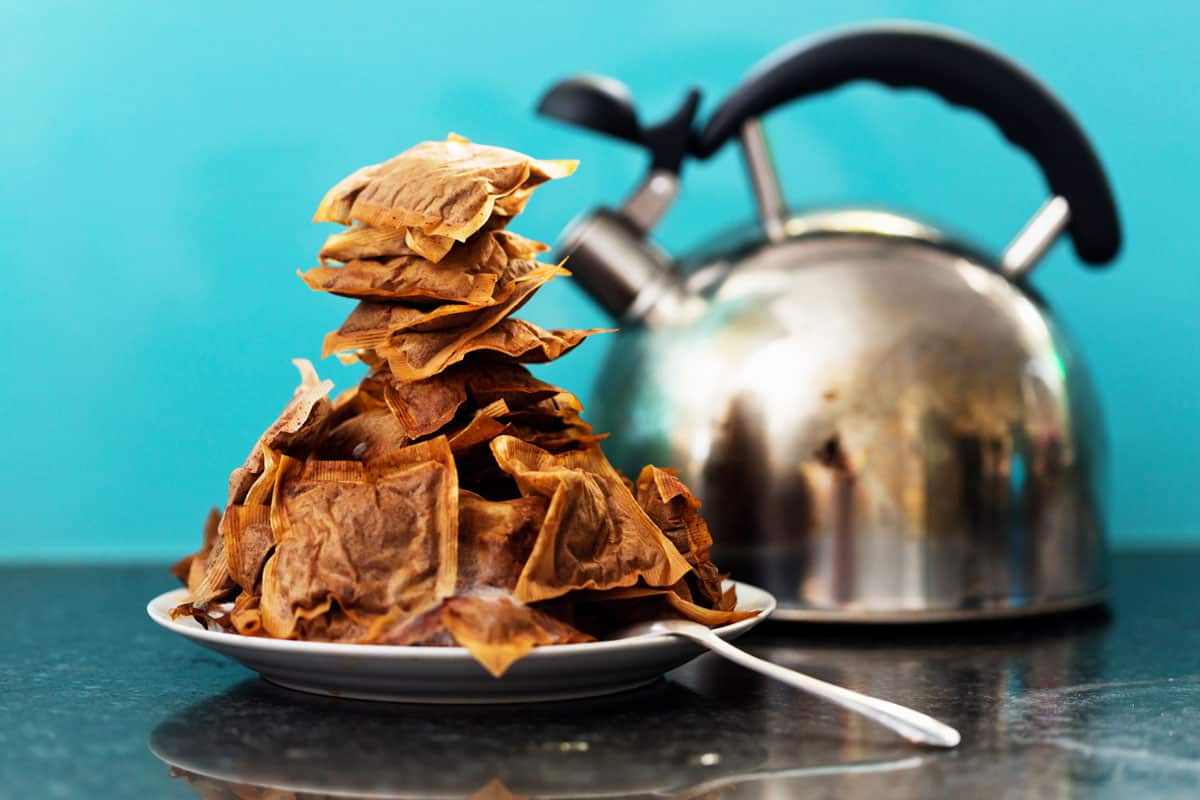
What you will need:
- Used tea bags
- Paper towel or tissue
- Small plastic tray
- Water
- Some seeds
What to do:
- Get some paper towels, fold them, and place them in the plastic tray.
- Sprinkle a good amount of water till they’re wet
- Soak the tea bags and pile them up on the tray
- Make a hole in each bag and plant the seed in them
- Put the tray out in the sun
- When the seeds germinate and the seedlings grow about 2cm tall, transfer them to bigger pots or right into your garden
Tea Bags As Fertilizer
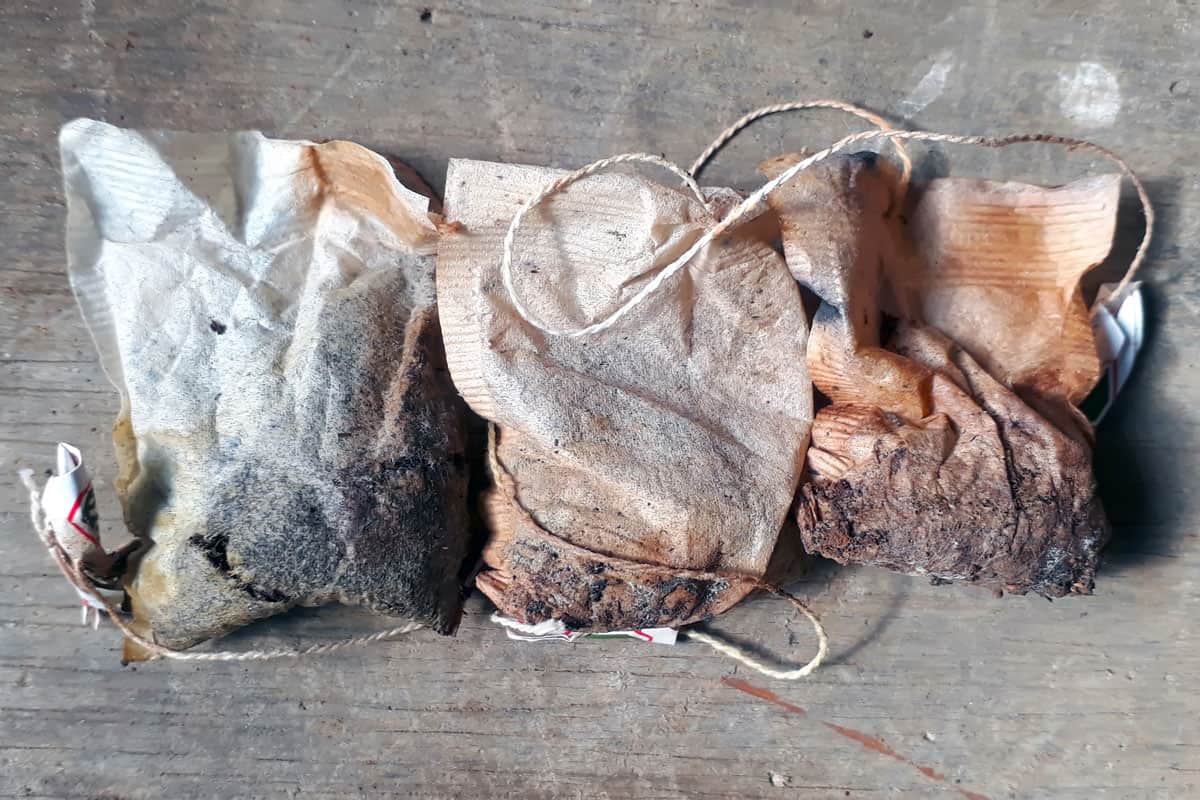
If you’re not a fan of growing plants, you can make use of the tea bags as a fertilizer. First, check the component of the bag. Most of the manufactured tea bags are already decomposable, and yes, even the bags! The bags are usually made from a relative of a banana which can be broken down in about six months.
However, there are still others that use polypropylene for the bags. So, cut them out and only use the tea leaves. However, if you are unsure of the bag’s components, just throw them in the compost pit and let the worms and microorganisms do their job. It’ll be obvious if the bag is compostable or not.
Items you will need:
- Tea leaves
- Compost Bucket
- A three-tined cultivator
Check out this DeWit 3-tine Cultivator on Amazon.
Leave the teabags into your compost bucket together with all your decomposable waste. Once ready, take them out to the compost area or in a worm bin if you have one and cover lightly. You can also dig the tea leaves directly around the plants to nourish them while the tea bags decompose. This will aid moisture retention and weed repression.
Composting tea bags is a “green” method of disposal that also improves your plant's health when used by promoting earthworms, increasing oxygen levels, and increasing drainage while maintaining moisture.
How To Grow Your Own Tea Plant
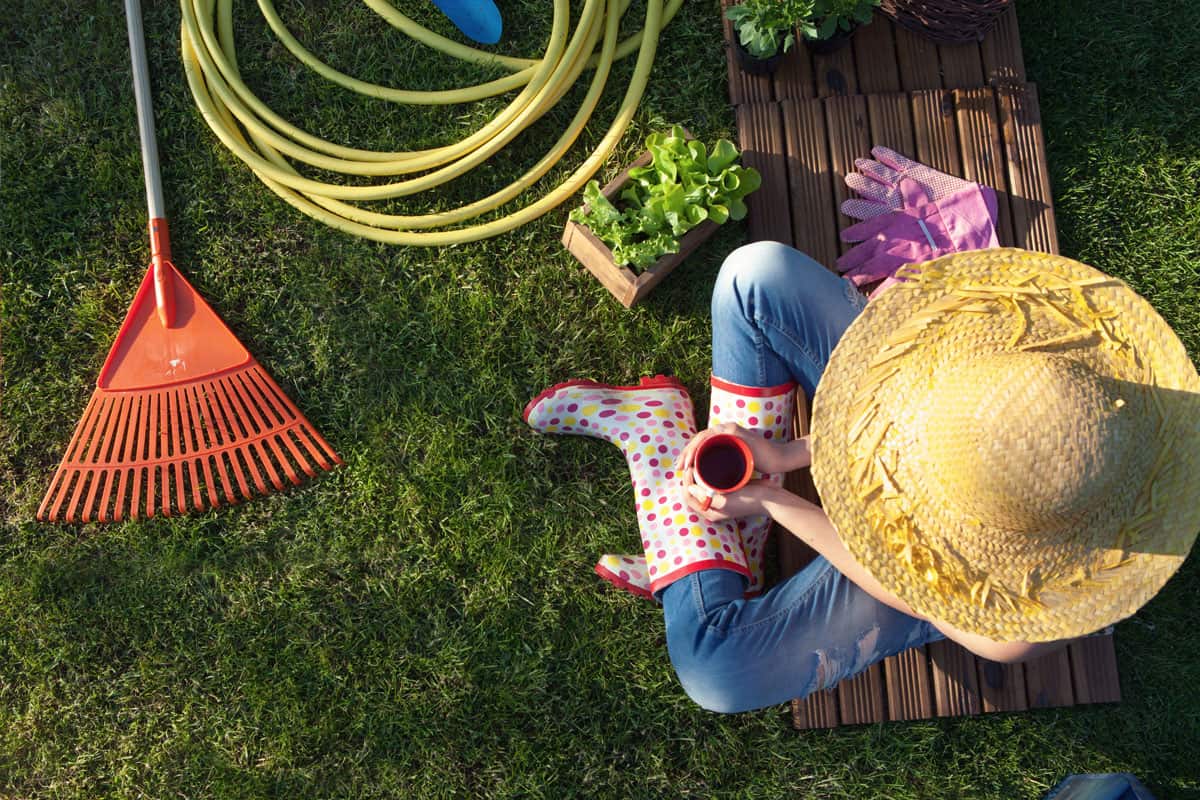
Some of us just cannot live a day without having some tea. Imagine you were craving a cup of tea but realized you are already out of stock. Why not grow a tea plant in your garden? It’s quite easy.
To start, we will divide plants based on which part you can make tea out of.
- leaves
- seeds
- fruit
- flowers
- roots
Tea From Leaves
You wouldn’t need a large garden to grow your own tea plant. Camilla Sinensis plant is worldly used for commercial tea. This plant can be used to make green, oolong, white and black tea. This shrub is hardy in USDA zone 7-9 and likes well-drained soil. It takes three years for this plant to mature for harvesting so you might need a little patience.
Once ready for harvesting, pluck the youngest leaf and buds. Different types of teas are made based on the oxidation level it is exposed to. Black teas are heavily oxidized by crushing and rolling before drying. Green teas are not oxidized at all, it is immediately steamed after picking. White and oolong teas are lightly oxidized.
Tea From Seeds
Also known as methi, Fenugreek seeds are commonly used in Indian and Asian cooking for their maple aroma. Brewing tea out of the seeds can provide health benefits since it is medically proven to help induce lactation, ease menstrual pain, boost testosterone and sperm count for males, and improve metabolic symptoms.
Plant fenugreek in spring or early summer in well-drained soil with a pH range of 6.5 to 8.2. After three to five months of planting, you can already collect the seeds. 10-20 seeds develop within the small pods and you can rub them open with your palms.
Lightly crush the fenugreek seeds to release the flavor. Place the crushed seeds into the tea strainer then place the strained tee into a small pan with water. Simmer for two to three minutes steep for another 10-15minutes and serve. You may enjoy this better with a hint of nutmeg and twisted lemon!
Check out this ChefSofi Mortar and Pestle on Amazon.
Tea From Fruit
Of all the teas around the world, fruit teas might be the favorite. They are incredibly refreshing and rightfully so! They have infused fruit flavors that are enjoyed both hot and cold. Fruit teas are made from a wide variety of fruits including apple, hibiscus, rosehip, strawberry, and a lot more.
Strawberries are one of the most popular fruits to brew tea. There are different types of strawberries, but they all require the sun to produce fruit. You may also apply organic fertilizers to increase the nutrition of the soil. In general, it takes 5-21 days for strawberry seeds to germinate then, you can already harvest the fruit four to six weeks after blossoming.
You will know once this fruit is ready for harvesting once it is already deep red. Chop them into smaller pieces and add four cups of water into a saucepan and simmer for two to three minutes. Strain the tea into your favorite cup and voila! You have in your hands an energizing cup of tea. Easy right?
Tea From Flowers
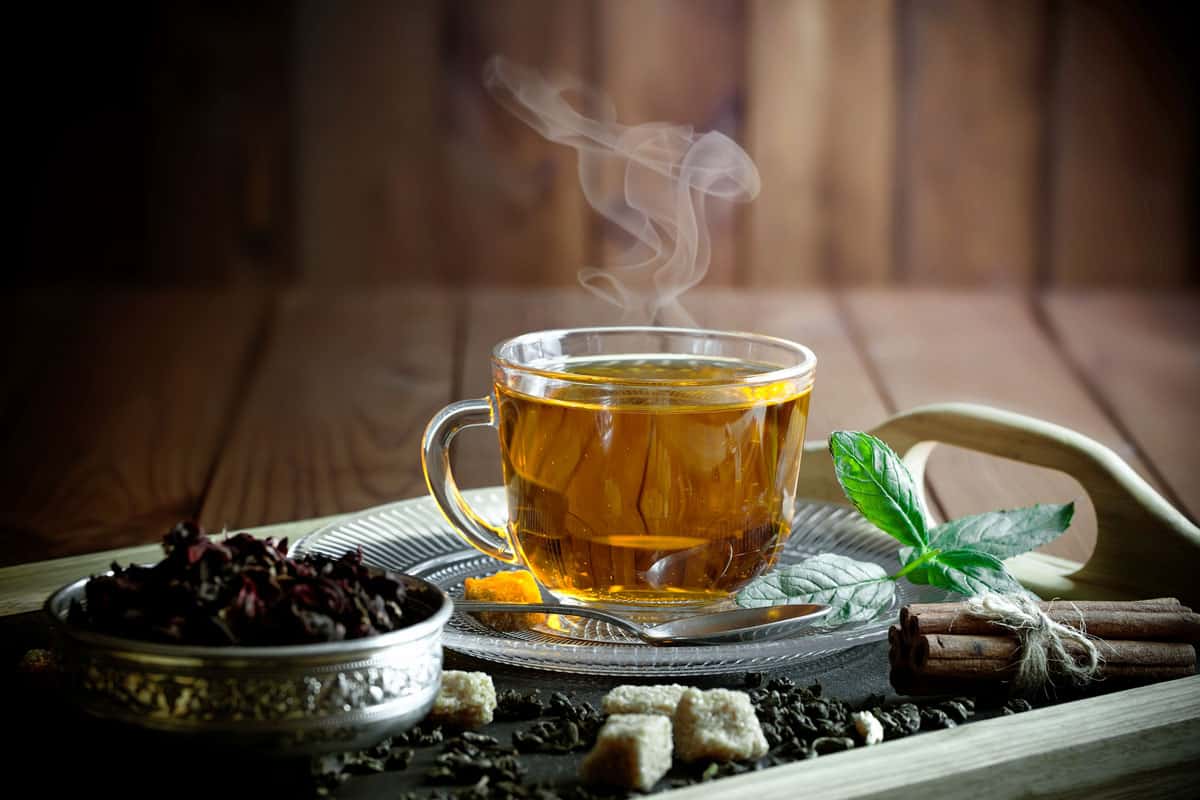
Lavender is a member of the mint family and is one of the best for making tea. It is easier to grow a lavender that is purchased from a nursery so that would be your best bet. Just grow it in a sunny location and conduct occasional pruning to maintain its size
Cut the long stems before the flower fully opens. Hang them in a cool dark place with good air circulation. Just wait till it dries and feels crispy, then keep them in a sealed container.
Put two or three flowerheads in the bag, place them in a cup, and pour boiling water into the cup. Cover the cup to let it steep for a while, remove the bag and enjoy. It’s simple as that.
Tea From Roots
Herbal root teas have been used in Chinese healing traditions for centuries. They are naturally detoxifying, helps build the immune system and assist in weight management. Sassafras tree is one of the commonly used plants for brewing tea out of its roots.
Native to parts of Northern America and Easter Asia, sassafras can produce tea from their root bark. To allow the flavors to infuse into the liquid, boil the root bark in water for 15-20minutes. Strain well and serve. You may also combine other herbs such as ginger, cinnamon, or aniseed to produce an even more nutrient-rich tea.
To Wrap Up
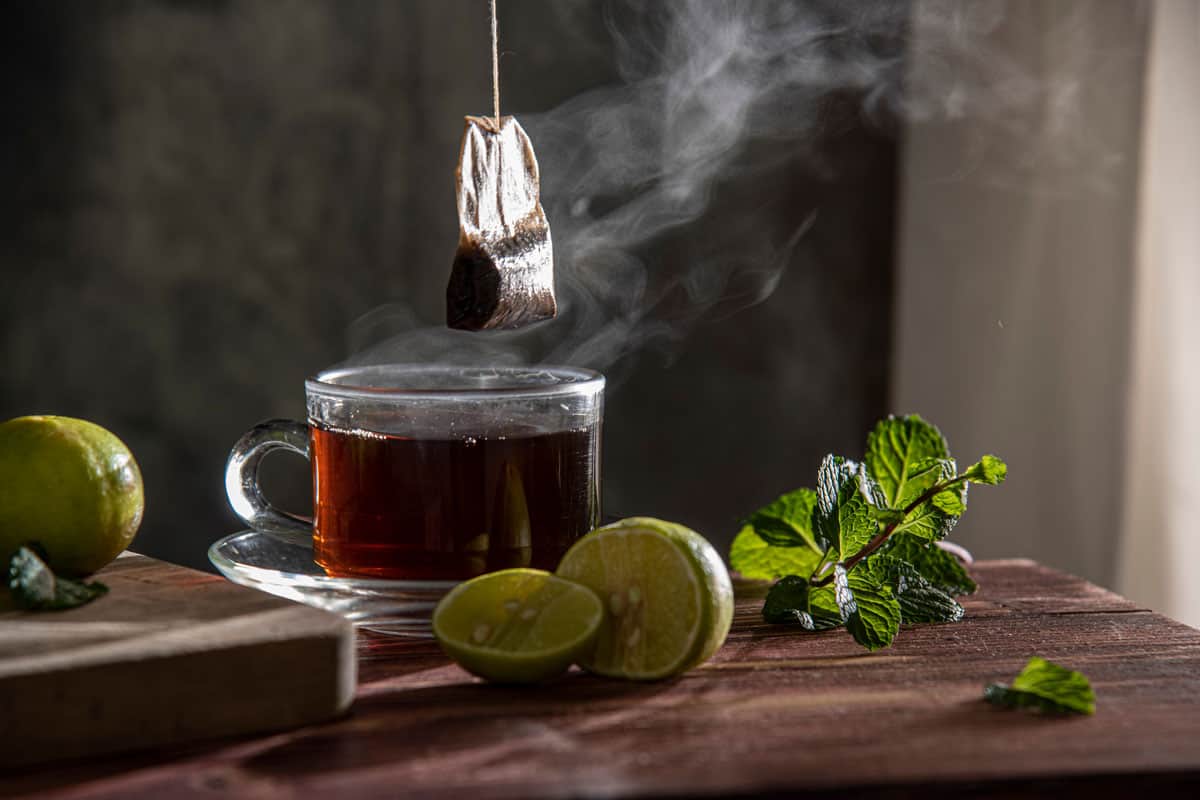
Although you cannot grow tea from tea bags, there are a lot of ways that you can use your leftover or used tea bags! From tea gardens to fertilizers, you can all do it yourself. Let us be conscious and innovative to make use of what we have.
Supporting a circular economy and moving towards sustainable living would not only be beneficial for our Earth but also help us live a more purposeful life. So, the next time you have that relaxing cup of tea, take a step back and think of ways we can improve our day-to-day lives.
If you found this article helpful, be sure to check out these great posts:


